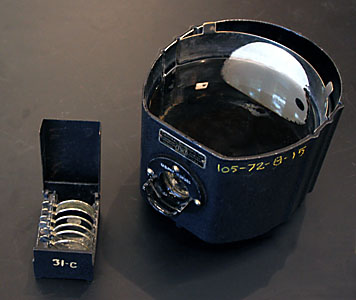
| Optics
> Vision > The Eye |
DCS#
6J10.21 v.2 |

| Cenco Ingersoll eye model with
lens set |
101-06-F |
| light source |
101-06-F |
| video camera |
202 |
| lens
type |
power
(D) |
| Plano-Convex | +7.00 |
| Double Convex | +20.00 |
| Spherical Convex | +2.00 |
| Spherical Concave | -1.75 |
| Cylindrical Concave | -5.50 |
| Cylindrical Convex | +1.75 |
| demonstration |
retina
position |
crystalline
lens |
object
location |
corrective
lens |
notes |
| accommodation |
normal |
first
+7 D, then +20 D |
use
window, then light source at 35 cm |
||
| near-sightedness |
rear |
+20 |
35
cm |
-1.75 |
compare
object positions with and without corrective lens |
| far-sightedness | forward |
+20 |
35
cm |
+2.00 |
compare
object positions with and without corrective lens |
| pupil
size |
normal |
+20 |
35
cm |
diaphragm |
|
| astigmatism |
normal |
+20
with -5.5 behind cornea |
35
cm |
+1.75 |
rotate
corrective lens for sharp image |
| cataract surgery | normal | remove | 35
cm |
+7.00 |
note
that image is distinct only for near objects |
| magnifying
lens |
normal |
+20 |
35
cm/closer |
none/+7.00 |
compare
image sizes in the two cases |